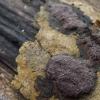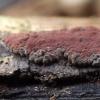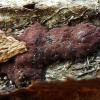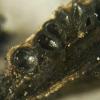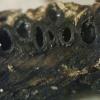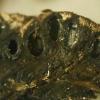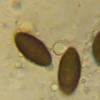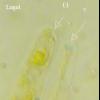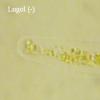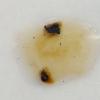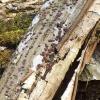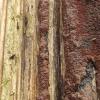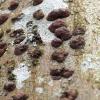
21-12-2025 09:32
Hello.A tiny ascomycete found embedded in wood in

21-12-2025 21:32
Pol DebaenstHello, Garden, Burgweg 19, Veurne, BelgiumOn 10/1

22-12-2025 23:38
Patrice TANCHAUDBonsoir, récolte sur un mur en pierre, apothéci

22-12-2025 00:47
Patrice TANCHAUDBonsoir, récolte à proximité du milieu dunaire

21-12-2025 21:40
Isabelle CharissouBonjour, j'aimerais connaitre les références de

20-12-2025 23:08
Patrice TANCHAUDBonsoir, récolte sur sol sablonneux dans l'arri�
Hypoxylon on Carpinus?
Mirek Gryc,
30-03-2020 20:45
Hi.
I found two Hypoxylon collections growing on Carpinus yesterday. The shape of the sporocarps varies but I suspect it is the same species. So far, I've only microscoped the first one.
The keys contained in the work "New species of Hypoxylon from western Europe and Ethiopia" lead me to the Hypoxylon commutatum. I compared the features of my sporocarps to all species found on Carpinus, but none match mine.
Description for Hypoxylon commutatum is quite scanty but only in it I did not find any features that would exclude this species.
The reaction of porus in my collection was very capricious. Only a few ascus have a slight bluish discoloration of porus. Over 95% of ascus do not show reaction to iodine. In no mature ascus I have not observed a reaction.
Spores in my collection slightly larger than those listed on the page:
http://pyrenomycetes.free.fr/hypoxylon/html/Hypoxylon_commutatum.htm
In the original description, however, in "Pyrenomycetes germanici" they give slightly larger ones that perfectly match the size of the spores in my collection.
Perhaps I have not reached all species that occur on Carpinus so I am asking you for help.
The keys contained in the work "New species of Hypoxylon from western Europe and Ethiopia" lead me to the Hypoxylon commutatum. I compared the features of my sporocarps to all species found on Carpinus, but none match mine.
Description for Hypoxylon commutatum is quite scanty but only in it I did not find any features that would exclude this species.
The reaction of porus in my collection was very capricious. Only a few ascus have a slight bluish discoloration of porus. Over 95% of ascus do not show reaction to iodine. In no mature ascus I have not observed a reaction.
Spores in my collection slightly larger than those listed on the page:
http://pyrenomycetes.free.fr/hypoxylon/html/Hypoxylon_commutatum.htm
In the original description, however, in "Pyrenomycetes germanici" they give slightly larger ones that perfectly match the size of the spores in my collection.
Perhaps I have not reached all species that occur on Carpinus so I am asking you for help.
Spores:
(10.9) 11.3 - 12.1 (12.5) × (4.8) 5 - 5.5 (6) µm
Q = (2) 2.1 - 2.3 (2.6) ; N = 15
Me = 11.7 × 5.3 µm ; Qe = 2.2
Q = (2) 2.1 - 2.3 (2.6) ; N = 15
Me = 11.7 × 5.3 µm ; Qe = 2.2
10.92 4.75
11.55 5.51
11.27 4.98
11.73 4.99
12.02 5.44
12.50 4.81
11.74 5.08
12.10 5.43
12.44 5.05
11.53 5.51
11.60 5.07
11.80 6.00
11.21 5.45
11.61 5.51
11.79 5.50
11.55 5.51
11.27 4.98
11.73 4.99
12.02 5.44
12.50 4.81
11.74 5.08
12.10 5.43
12.44 5.05
11.53 5.51
11.60 5.07
11.80 6.00
11.21 5.45
11.61 5.51
11.79 5.50
Thank you in advance.
Mirek
